8 Top IT Helpdesk and MSP: Differences and How to Choose
Quick and proactive monitoring of IT assets, timely troubleshooting of issues, and comprehensive management are the keystones for standing out in the business world and that is why IT helpdesk and MSPs have taken key roles for enterprises. However, providing excellent customer service and ensuring client satisfaction is only possible by using the right tools and technology. This article lists the top 8 IT Helpdesk and MSPs tools with their features, and differences and a guide for you to choose which one will work best for your business.
- Part 1 : Understanding IT Helpdesk and MSP
- Part 2 : Key Differences Between IT Helpdesk and MSP
- Part 3 : Challenges in Choosing Between IT Helpdesk and MSPs
- Part 4 : Benefits of Integrating IT Helpdesk and MSP
- Part 5 : Choosing the Right MSP Helpdesk Software
- Part 6 : 8 Top MSP Helpdesk Software in 2025
- Part 7 : Features to Look For When Choosing the Right MSP Helpdesk Software
- Part 8 : Implementing an Effective MSP Helpdesk
- Part 9 : AirDroid Business: A Comprehensive MDM Solution
- Part 10 : Transitioning from Internal Helpdesk to MSP
1Understanding IT Helpdesk and MSP
Before diving into the details and listing IT Helpdesk and MSPs software, it is important to know what these are and where they are used.
1What is an IT Helpdesk?
An IT Helpdesk provides support for IT-related issues within an organization. Troubleshooting and resolving specific technical problems for users, either related to hardware, networks, or software, are their primary focus. Depending on the service model, the IT Helpdesk can serve a company only internally by helping employees of the company or also externally by helping its customers.
2What is an MSP (Managed Service Provider)?
Managed Service Provider (MSP) offers comprehensive IT services to businesses on an ongoing basis. MSPs take a proactive approach to IT management and ensure that the issues are prevented in the first place and the IT infrastructure is always up and running while also ensuring data safety for its clients.
2Key Differences Between IT Helpdesk and MSP
Some of the key differences between IT Helpdesk and MSP are mentioned below.
Service Scope and Focus
Helpdesk services include support with mainly internal issues including technical support, ticketing system, problem resolution, and user support. On the other hand, services provided by MSPs include proactive IT Management, remote monitoring and management (RMM), and comprehensive IT support, ensuring data safety and compliance and automating the workflows.
IT Helpdesk provides more of reactive services like troubleshooting or resolving hardware malfunctions whereas MSPs are proactive and they tend to watch out for issues before they interrupt the systems ensuring they run smoothly.
Internal vs. Outsourced Support
Helpdesks can either be internal or outsourced whereas MSPs are usually third-party companies providing services to handle the entire IT infrastructure of the company.
3Challenges in Choosing Between IT Helpdesk and MSPs
Choosing between IT Helpdesk and MSPs can sometimes be a daunting decision for businesses. Here is why:
Cost Considerations
Cost is among the top considerations when making a choice. Where the setup is budget-friendly for IT helpdesks, MSPs offer lucrative long-term cost saving and a comprehensive IT support.
Scalability
Businesses grow and their IT needs evolve alongside. Hence, there needs to be a system in place that can cope up with the growing needs seamlessly.
Integration
When choosing between the two IT support systems, businesses face the hurdle of integration with existing systems. They need to evaluate the new system on the basis of how well it will integrate with the IT infrastructure already in place.
In view of the above challenges, businesses find it more practical to integrate both the IT helpdesk and MSPs. This offers a much sought-out amalgamation of the benefits associated with both and hence providing a more wholesome IT support system.
4Benefits of Integrating IT Helpdesk and MSP
Integrating IT Helpdesk and MSP can provide a number of different benefits to the company. Combining them both creates a seamless and efficient support system which in turn leads to quicker and smoother IT operations, cost savings, better security, and improved user satisfaction.
5Choosing the Right MSP Helpdesk Software
Choosing the right MSP Helpdesk can be a pivotal step in ensuring efficient support and productive operations. The right product should be able to fulfill the unique requirements of the company. Let us have an in-depth analysis of the top MSP helpdesk software to help you choose the most appropriate one.
68 Top MSP Helpdesk Software in 2025
1Zendesk
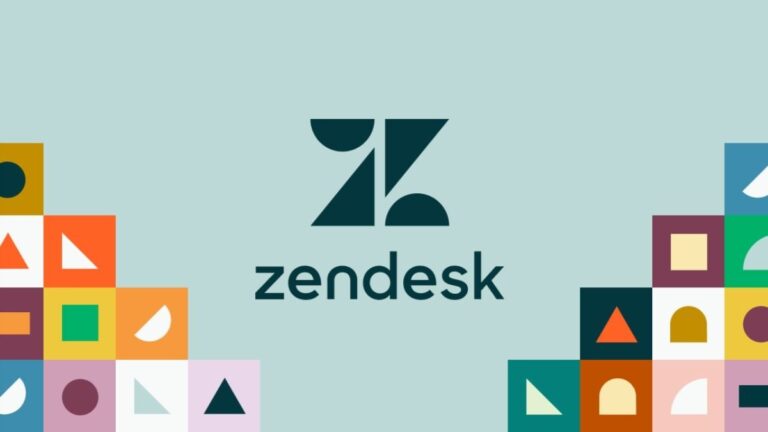
Overview: Zendesk offers a range of tools that can be helpful in managing IT support, client interactions, and workflows.
Official Website: https://www.zendesk.com/
Pros: User-friendly interface
Cons: Lack of features compared to many other tools in the market, poor customer support, ticketing issues
Price:
- 14 days free trial
- Support only (Team) $19.00/1 user per month billed annually
- Support only (Pro) $55.00/1 user per month billed annually
- Support only (Enterprise) $115.00/1 user per month billed annually
- Suite Team $55.00/1 user per month billed annually
- Suite Growth $89.00/1 user per month billed annually
- Suite Pro $115.00/1 user per month billed annually
- Suite Enterprise $169.00/1 user per month billed annually
Key Features:
- Helps teams to collaborate using ticket sharing and internal notes.
- Centralizes customer queries into a single ticketing interface so that they can be managed easily.
- Offers a self-service portal with FAQs and articles to help customers with answers to commonly asked questions.
Who should use Zendesk? Zendesk is ideal for Software companies, Small to Medium-Sized Businesses (SMBs), Enterprise Companies, E-commerce Businesses, Customer Support Teams, and industries including telecommunications, finance, and healthcare.
G2 Rating: 4.3 out of 5
2Zoho Desk
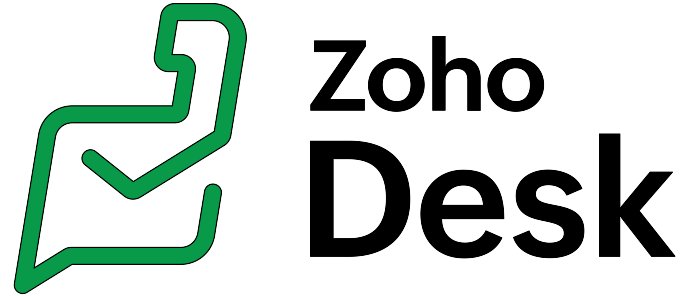
Overview: Developed by Zoho Corporation, it is designed to help businesses manage customer interactions and support requests across multiple channels from a unified platform.
Official Website: https://www.zoho.com/desk/
Pros: Intuitive interface, ease of use, easy integration with existing systems
Cons: Lack of features
Price:
- 15 days free trial
- Free $0.00 for 3 agents
- Express $7.00/user/month billed annually
- Standard $14.00/user/month billed annually
- Professional $23.00/user/month billed annually
- Enterprise $40.00/user/month billed annually
Key Features:
- Allows businesses to manage multiple customer support channels from a single platform.
- Smooth ticketing by converting customer queries into tickets spontaneously.
- Provides an automated knowledge base where answers to common questions and their solutions can be found.
Who should use Zoho Desk? It is ideal for Software companies, Small to Medium-Sized Businesses (SMBs), Enterprises, E-commerce Businesses, Customer Support Teams, IT teams, Organizations with remote teams and Startups.
G2 Rating: 4.4 out of 5
3Freshservice
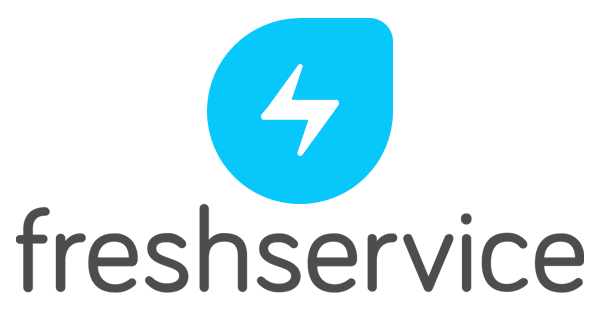
Overview: Freshservice is an ITSM solution and IT service desk which is easy to use. It is designed using best practices of ITIL enabling companies to focus on service delivery.
Official Website: https://www.freshworks.com/freshservice/
Pros: Efficient and comprehensive ticketing system, automation provided by customizable workflows
Cons: Limited Features, Limited Customization
Price:
- 14 days free trial
- Starter $19/user/month billed annually
- Growth $49/user/month billed annually
- Pro $99/user/month billed annually
- Enterprise: bespoke
Key Features:
- Helps users with tracking and resolving IT issues effectively with easy ticketing system.
- Helps in the prevention of incidents in the future by identifying the root cause of recurring issues.
Who should use Freshservice? Freshservice is particularly beneficial for IT Teams, Enterprise IT Departments, HR and Facilities Teams, Customer Support Teams, Organizations with Remote Teams, and Managed Service Providers (MSPs).
G2 Rating: 4.6 out of 5
4GoTo Resolve
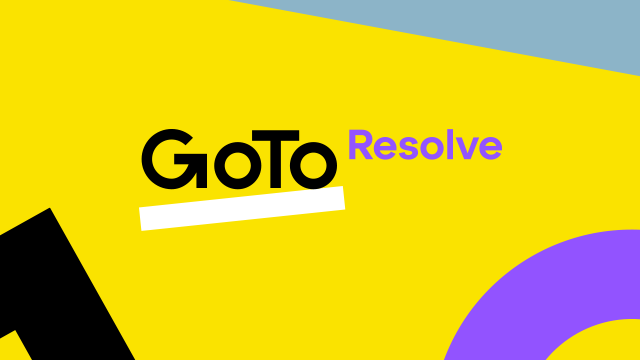
Overview: GoTo Resolve is an IT management and support solution which was designed to help companies of all sizes take command of their IT infrastructure.
Official Website: https://www.goto.com/
Pros: Remote monitoring and management, remote support
Cons: It is a comparatively expensive solution, slow performance is an issue reported by users
Price:
- 14 days free trial
- Remote access $23/month billed annually
- Remote support plus $44/month billed annually
- Standard $57/month billed annually
- Premium: bespoke
Key Features:
- Helps IT teams to manage access control, user permissions, and roles on multiple devices.
- Helps in managing and monitoring the security, health, and performance of devices. It also helps to ensure that they are functioning properly and are up-to-date.
- Helps to improve IT operations by offering insights and reports on ticket volumes, system performance, response times, and more.
Who should use GoTo Resolve? It is especially useful for IT support teams, Small to mid-sized businesses, Help desk staff, Managed Service Providers (MSPs), and companies with remote or distributed teams.
G2 Rating: 4.4 out of 5
5ITarian
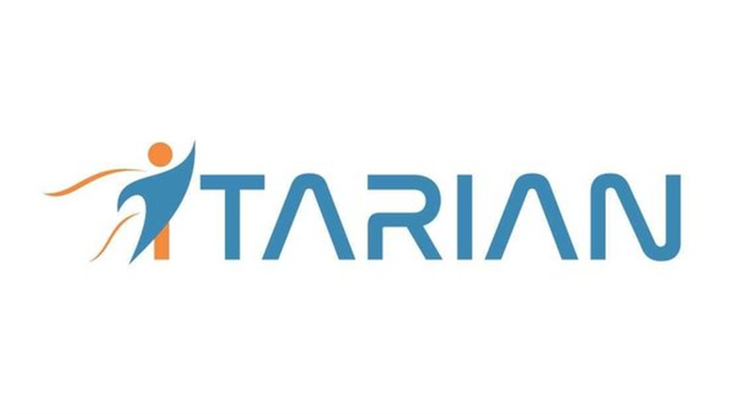
Overview: ITarian is a cloud-based platform which provides tools for support, management, and remote monitoring.
Official Website: https://www.itarian.com/
Pros: 24/7 Customer Support, Affordable, Remote Support Capabilities
Cons: Limited Customization, Limited Advanced Features
Price: Free for up to 50 endpoints and then $1.25 per endpoint/year
Key Features:
- Offers tools for backup and recovery of data, which ensures the continuity of business in case of system failure.
- Ensures that the devices are up-to-date and are well protected by automating the process of software updates and deploying security patches.
Who should use ITarian? ITarian is suitable for Businesses of All Sizes, Remote Support Technicians, Managed Service Providers (MSPs), and IT Administrators.
G2 Rating: 4.0 out of 5
6Faveo
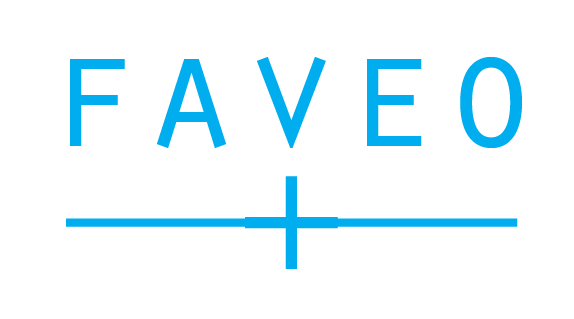
Overview: Faveo is a cloud-based helpdesk that is designed to help companies manage their external or internal communication efficiently and to streamline customer support.
Official Website: https://www.faveohelpdesk.com/
Pros: Budget-friendly solution, seamless integration
Cons: Inadequate AI Features, Software Bugs
Price:
- Helpdesk pro $500 one-time payment
- Helpdesk advance $1000 one-time payment
- Helpdesk smart $100 one-time payment
- Helpdesk community: Free
Key Features:
- Assists communication across various channels such as chat, email, and phone.
- Allows creating, tracking, and resolving support tickets.
Who should use Faveo? Any company, group, or individual who wants to improve their customer support, track service requests, and improve communication can benefit by using Faveo.
G2 Rating: 4.6 out of 5
7SolarWinds

Overview: SolarWinds Service Desk is an IT Services Management (ITSM) solution which is designed to assist businesses in streamlining and automating their IT service Management processes.
Official Website: https://www.solarwinds.com
Pros: A user-friendly interface
Cons: Not a very economical option
Price: 30 days free trial available. Essential $39/month/technician. Advanced $79/month/technician. Premier $99/month/technician. All plans can be customized according to your needs and budget.
Key Features:
- Customized reports generation
- Provides a portal for users to submit and check the status of a ticket, and find solutions to common issues through the knowledge base.
- Enables users to track, manage, and resolve IT incidents effectively, ensuring quick troubleshooting.
Who should use SolarWinds? IT Support Teams, Managed Service Providers (MSPs), Help Desks, Small to Mid-Sized Enterprises (SMEs)
G2 Rating: 4.3 out of 5
8NinjaOne
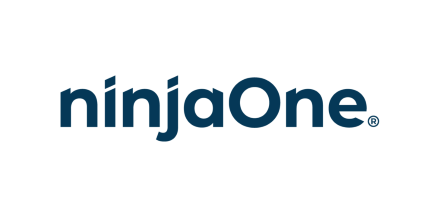
Overview: It is an IT management platform which is designed for IT Teams and Managed Service Providers (MSPs). It is a cloud-based platform.
Official Website: https://www.ninjaone.com/
Pros: Remote Access, Automation
Cons: Limited Features
Price: 14 days free trial. Bespoke price
Key Features:
- Helps to remotely detect and resolve issues by real-time monitoring of systems, networks, and devices.
- Includes tools for endpoint security, antivirus management, and monitoring and implementing security policies.
Who should use NinjaOne? It is particularly useful for SMBs (Small and Medium-sized Businesses), IT Consultants, Managed Service Providers (MSPs), and IT Administrators and Teams.
G2 Rating: 4.7 out of 5
7Features to Look For When Choosing the Right MSP Helpdesk Software
1Ticketing Systems
When choosing the right MSP Helpdesk software, an efficient ticketing system should be one of the most important features to look for. An efficient ticketing system helps the company to address and resolve customer issues effectively. It also helps MSPs to track and monitor the status of each ticket.
2Automation
It is important to check that the MSP Helpdesk software provides automation services. It will help the company by automatically escalating any ticket that is not resolved in the predefined timeframe. It will automatically complete tedious tasks like system maintenance, or software updates.
3Reporting
It should be able to track average resolution time, first response time, ticket volume, and customer satisfaction. It should also be able to generate reports to analyze team performance, common client issues, and service effectiveness.
4Integration Capabilities
Your selected tool should be able to integrate with Customer Relationship Management (CRM) software to help the company have a view of interaction with customers and history.
5Multi-channel Support
The software should allow you to handle the support requests from different communication channels seamlessly. It will enhance the ability to manage customer interactions efficiently, improve response time, and deliver a seamless customer experience.
8Implementing an Effective MSP Helpdesk
To implement an effective MSP Helpdesk successfully, you need to select the right software, establish a clear process, train your team, and monitor and improve your performance continuously. By focusing on customer satisfaction and by delivering high-quality support across multiple channels, you can create a scalable and effective helpdesk.
1How to Set Up an MSP Helpdesk
The following are the major steps to set up an MSP Helpdesk:
- Evaluate your needs and objectives and choose the right Helpdesk software accordingly.
- Design your procedures and goals for Helpdesk.
- Hire and train your support engineers.
- Set up communications channels and establish a ticketing system.
- Establish access controls and security protocols.
- Continuously monitor, track, and improve performance.
2Best Practices for MSP Helpdesk Management
If you want your MSP Helpdesk services to work effectively and seamlessly, follow the best practices:
- Perform surveys about customer satisfaction regularly and collect feedback.
- Offer various channels (messages, phone calls, emails, social media messages, and if possible, in-person visit) for clients to contact you.
- To recognize issues and respond to them promptly, gather and analyze metrics in real time.
- Use attributes for labeling the tickets such as the type of issue, the type of company, the priority level, and so on for easy management.
- Set ticket priority based on variables like the severity of issue, time sensitivity, and the number of impacted clients.
- Build an online knowledge base, so that data is effectively accessible from anywhere.
- Follow up on resolved cases by reaching out to the customer and ensuring that the issue resolution worked out satisfactorily.
9AirDroid Business: A Comprehensive MDM Solution
AirDroid Business, a wholesome, reliable MDM solution, can significantly improve the efficiency and productivity of IT Helpdesks by helping them streamline their operations. Here is how it helps:
1How AirDroid Enhances MSP Operations
It helps improve customer satisfaction and productivity in the following ways:
- A centralized device dashboard ensures the visibility of each and every device's screen. It also allows you to group the devices for easy management.
- Set up customized workflows for enhanced automation.
- Use voice chat for real-time support.
- Manage Android and Windows apps for multiple clients according to their specific needs.
2Integrating AirDroid with MSP Helpdesk
AirDroid Business can be very handy for MSP Helpdesks when integrated efficiently. Let’s see what it has to offer for MSP Helpdesks.
- Integrated Device Management: MDM solutions such as AirDroid Business can be combined with IT helpdesk and MSP services to provide integrated device management and support.
- Remote Support and Troubleshooting: AirDroid Business provides remote access and management capabilities to support IT helpdesk and MSPs to quickly diagnose and resolve device issues.
- Automation and Efficiency Improvement: Through AirDroid Business, IT helpdesk and MSPs can automate device configuration, updates, and policy implementation to improve support efficiency.
- Security and Compliance Management: An MDM like AirDroid Business can help the IT helpdesk and MSP ensure device security and meet data privacy and compliance requirements.
In short, when IT Helpdesk is used in combination with MDM solutions like AirDroid Business, device management, remote support, and security can be enhanced to provide enterprises with comprehensive IT support and management solutions.
10Transitioning from Internal Helpdesk to MSP
Transitioning from internal Helpdesk to MSP requires notable changes in structures, processes, tools, and overall customer service approach. Where the internal helpdesk focuses on resolving issues within the organization, MSP delivers proactive, external IT support and services to the client. Whether or not to transition depends on your organization’s size and specific needs. Once you’ve decided to transition from internal helpdesk to an MSP, make sure you follow the best practices to make it as smooth a transition as possible.
FAQs






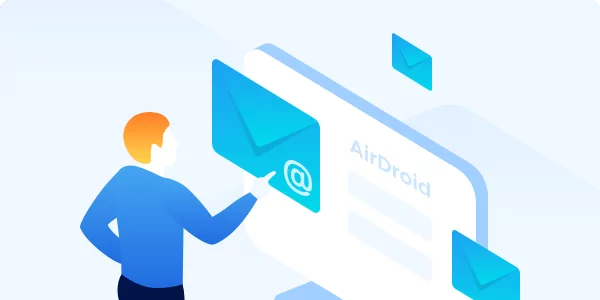
Leave a Reply.